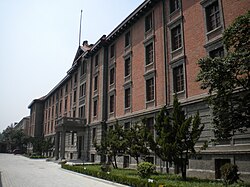This article has multiple issues. Please help improve it or discuss these issues on the talk page . (Learn how and when to remove these messages)
|

This is a list of people associated with Peking University in China. Several notable individuals have been associated with Peking University.




